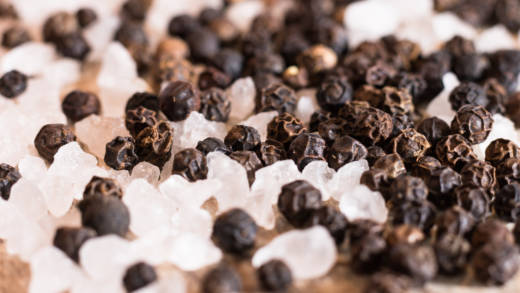Salt and pepper shakers are so omnipresent on tabletops that adding a dash of the white or black stuff (or both!) is almost a dining rite. The seasonings pair well with just about everything and they go together like — well, salt and pepper.
But these two culinary staples have not always occupied such a place of prominence. "It's a weird accident of history," says Ken Albala, a professor of history and founder of the Food Studies Program at the University of the Pacific. In Europe during the Late Middle Ages, "Pepper was never on the table, nor was any other spice, for that matter. Usually spices would be added in the kitchen with a very heavy hand until the 17th century."
Salt was on the table, but not in a shaker. Instead, salt was often presented in saltcellars, or in Italian courtly settings, at the end of a knife offered by a trinciante, or meat carver. According to Albala, the trinciante would carve the meat in the air, allowing each slice to fall delicately to the person being served. The trinciante would then dip the end of the knife in salt and scrape it onto the diner's plate. (If this sounds complicated, it was; there were entire books dedicated to the art of carving, and noblemen were often the carvers.)
In fact, salt has occupied a place of culinary dominance across cultures. "We like the taste of salt innately because salt is a signal of protein in nature," says Rachel Herz, an adjunct assistant professor of psychiatry and human behavior at Brown University and author of Why You Eat What You Eat. What's more, humans need salt to regulate fluid balance and help nerves and muscles function. Salt also helped preserve food before refrigeration. And, Herz says, studies have shown that the more salt people eat, the more they crave it.
So salt had a foothold in cooking, and pepper was one of many spices used in heavily seasoned dishes. But after the Middle Ages, the use of most spices decreased. The decline likely had multiple causes. As spices got more affordable, they grew less associated with wealth and featured less in European courtly cooking. At the same time, the view that spices were necessary for specific healthful properties declined.
